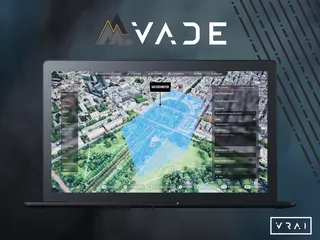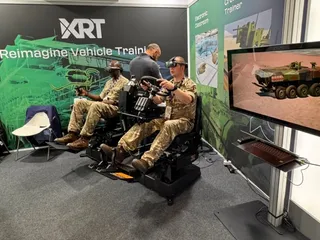Gaming Technology Holds Promise of Advancing Medical Education
Contact Our Team
For more information about how Halldale can add value to your marketing and promotional campaigns or to discuss event exhibitor and sponsorship opportunities, contact our team to find out more
The Americas -
holly.foster@halldale.com
Rest of World -
jeremy@halldale.com
Staff writer Chuck Weirauch reports on developments in the rapidly evolving serious games for healthcare learning sector.
Although simulation technology has become a leading tool for the advancement of medical education and training, gaming technology has still not gained an equal level of acceptance with medical educators as its counterpart. While the pioneering game-based Pulse!! Virtual Clinical Learning Lab developed by Texas A&M University-Corpus Christi and Breakaway, Inc., has proven to be a major success, most medical colleges and teaching hospitals have focused more on the use of human patient simulators, or mannequins, as their primary initial teaching tool.
Duke's Virtual Environment
That may change once the results are in concerning the training effectiveness of the gaming technology-based Immersive Learning Environments at Duke (ILE@D) being developed at the Duke University Human Simulator and Patient Safety Center at Duke University Medical Center in Durham, NC. The gaming platform for this Web-based and avatar-driven medical education system, which employs the Unreal gaming engine, is provided by the HumanSim platform developed by Virtual Heroes. Applied Research Associates, Inc., is the parent company for both HumanSim and Virtual Heroes.
According to John Taekman, MD., Director of the Human Simulator and Patient Safety Center, the ILE@D is to be a kind of cross-collaborative, multi-disciplinary platform where Duke medical faculty members can interact and communicate with their students while sharing resources with both students and other faculty members. Individually and in teams, students will be presented various virtual patient care scenarios in which they must diagnose the HumanSim-modeled patients, communicate with team members and perform the proper medical procedures in a variety of health care environments through their avatars.
The ILE@D system is currently undergoing development in partnership with HumanSim, with Duke University Medical Center physicians and other medical specialists serving as subject-matter experts for HumanSim game and instructional designers, along with computer modeling personnel. The HumanSim staff is in turn to develop learning module content and the most accurate physiological virtual patient models possible based on Duke SME input. Virtual Heroes and Duke are also collaborating on several other medical education and training projects.
"The idea of ILE@D is also to have a professional virtual environment where physicians and nurses learn together in a shared common space," Taekman explained. "This is a push in healthcare education towards training folks in the type of teams that they are going to be taking care of their patients in. Traditionally, nurses have been trained completely separately from physicians. The goal is to have the ILE@D system be integrated into the Duke undergraduate nursing and medical school curriculum. We also want to build courseware content in such a way that it can be re-used for graduate, continuing education and advanced nursing curricula."
Taekman, who is also a founding member of the Society for Simulation in Healthcare (SSIH), also feels that the IIE@D will help solve student throughput problems caused by starting student exposure to simulated patients with mannequins. Limited student access to the few and expensive mannequins in the simulation center can lead to potential problems with student performance, he indicated.
"Historically we have used mannequins, which is an effective way for people to learn," Taekman pointed out. "However, we have a throughput issue when we are trying to train a large number of people, such as all of the medical students. We want to use the virtual environment as a way of scaling interactive training."
What Taekman means is that undergraduate students would first work with the ILE@D HumanSim virtual patient model alone or in teams before capstone training exercises with the mannequin itself. That approach would provide the student with more confidence when performing the mannequin-based training scenarios. This approach could also reduce costs.
Jerry Heneghan, the Director of Product Support for HumanSim, describes this process as similar to commercial and military aviation pilot training, where the student first takes online familiarization courses and then learns and practices on flight training procedures trainers in the schoolhouse before being exposed to full-flight simulator training. A former military pilot himself, he has encouraged Duke University to take this approach to medical training.
Accurate Models
But the real key to the success of the ILE@D program is the accuracy of the virtual patient models incorporated in the system, Heneghan pointed out. That's why his company is drawing from Duke medical SME data to establish requirements for algorithmic models for virtual patient physiological characteristics and symptoms, down to accurate representations of the electrical activity of the cardiovascular system, for example. That accurate data repre-sentation is crucial not only for ILE@D, but for the future intended commercialization of the learning modules that HumanSim hopes to offer through commercial agreements with Duke to the medical education community, Heneghan remarked.
HumanSim and Duke have partnered in such agreements before, one example being the game-based Pre-deployment Anesthesia Training Module. That effort was funded by the US Army's Telemedicine and Advanced Technology Research Center (TATRC) as a training program for deployed Army physicians who had no previous education in that field. Now Duke is considering that module for its applicability for its resident training, Taekman said.
"No one has ever done this before on the scale that we are trying to create," Heneghan said in reference to the development and the future commercialization of the ILE@D and HumanSim learning modules. "This is a transformational change, because before everything has been mannequin-based."
Interest Growing
With the advent of such gaming technologies as those demonstrated in Pulse!! and HumanSim, the medical education community has begun to show more interest in gaming in its curricula. However, at this point no one seems to have a measure as to what extent.
To help answer that question, for the first time, the Association of American Medical Colleges (AAMC) initiated a survey amongst its membership this October as to the extent of the application of gaming technology as a part of its annual survey on the use of simulation for medical education. According to Carol Aschenbrener, MD., the Chief Medical Education Officer for the association, the results of the survey should be available within six months.
"The fact that AAMC is launching a survey will give you an idea of how interest has grown," Aschenbrener said. "The bottom line is there is not a whole lot yet implemented into the medical curriculum in terms of serious gaming, but the interest is definitely expanding and there are beginnings of some serious research on their impact."
Some of that preliminary research indicates that the use of some games can improve the dexterity and coordination of surgeons for laparoscopic surgery. But whether gaming technology can help transfer surgical skills gained from use of the game-driven learning tool to the actual procedure on a patient is still an unresolved issue.
"The use of simulation and gaming is one of the most promising tools that we have in medical education," Aschenbrener said. "If I knew the answer to this evidence-based question, it would totally change how we do medical education. And that question is, what is the relationship between the performance in simulation and the performance in practice? We have good research on pieces of that question, but there is a huge need for more research to be done."
Health Games Research
One of the organizations involved in such research is the aptly named National Health Games Research program based at the University of California at Santa Barbara. This organization's goal is to advance the research, design, and effectiveness of digital games and game technologies that promote health. Games for Health also provides an extensive searchable database of games that is accessible via its Web site at http://www.healthgamesresearch.org.
For example, one of the games referenced on the extensive Games for Health database is CliniSpace. This learning tool is an online Web-driven immersive virtual environment powered by a gaming engine where a team of heath care professionals can assess virtual patients' conditions in a virtual hospital setting and provide proper diagnoses and treatment.
"Well-designed health games are very powerful," said Health Games Research Director Debra Leiberman. "They provide experiential learning, where the player must make choices, take action and see the consequences of these choices and actions. This is a very effective way to learn by doing, or learning through experience. So games can not only improve knowledge, but they can also change behaviors."
While most of the Health Games Research findings have been gathered from those games designed for patient self-help, the same principles can be applied to those games specifically geared for educating and training professionals, Leiberman pointed out
"Doctors can be learners too with gaming technology," she said. "Games by their very nature deal with assessment. As a player, you are constantly getting feedback as to how you are doing, so you are being constantly assessed. This helps you do better next time and spurs you to try harder. Games can also provide decision support as to what to do next in terms of diagnosis and treatment."
Games for Health
Ben Sawyer is the President of Digital Mill and the founder of the Serious Games and Games for Health projects. The latter organization has held an annual conference for the past seven years, bringing companies like Microsoft together with university researchers, game designers and medical educators to highlight the latest developments in gaming for healthcare. Sawyer said that there has been considerable growth and interest in the area of games for medical professional education and training, so much so that the Games for Health annual event has begun holding a special session, "Ludica Medica," devoted to that specialty.
According to the Games for Health organization, topics covered at the 2012 Ludica Medica session this June included:
- the advancement of game engines to improve their ability to depict health related systems, biology, and virtual patients
- the conversion of off-the-shelf game technologies including software, hardware, and controllers for use in medical modeling & simulation
- the development of next-generation AI (artificial intelligence) systems to improve key component technologies such as realistic patient interviews; and specialized medical and biological models and visualizations that can be plugged into new games for training & education.
Soft Skills Opportunity
"We have seen a lot of activity in the area, but I think that the most important thing to understand is that a lot of the work in healthcare games that I have seen, so far, has been focused on the first-person perspective, that of a surgeon performing a procedure or an emergency room physician assessing a number of trauma cases. But there hasn't been a lot in games for healthcare training that has delved into the softer skills side."
Sawyer was referring to those games that are less concerned with portraying scenarios with the highest degree of physical accuracy than concentrating on the underlying human behavioral models by which people are making decisions in healthcare, such as in differential diagnoses, interpreting lab results and assessing patient manifestations. This emphasis is particularly valuable where health care professionals' soft skills are less well developed, he pointed out.
"Soft skills training is an area that offers a lot of opportunity, especially when you think about games being able to teach things that don't necessarily have to involve physical models," Sawyer explained. "This also encompasses more focus on preventative health, not just response-driven health care provisioning. The need for better soft skills offers opportunities for new types of training, and this is where games could possibly play a larger, more outsized role."


